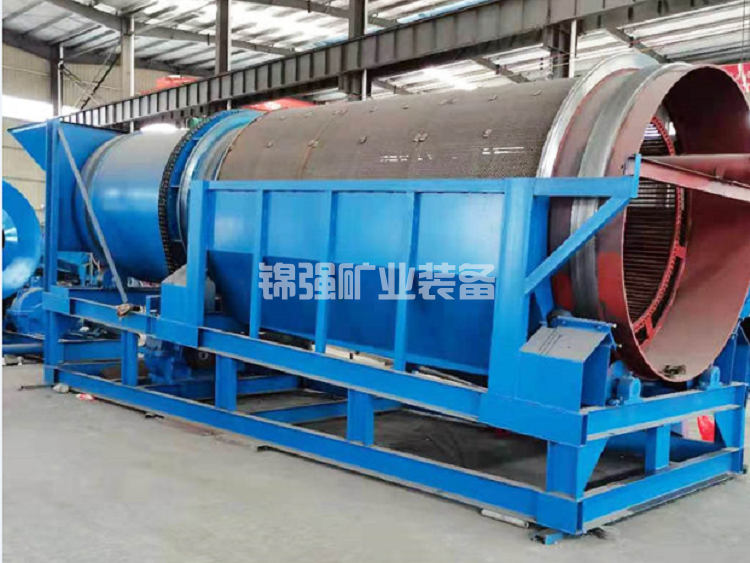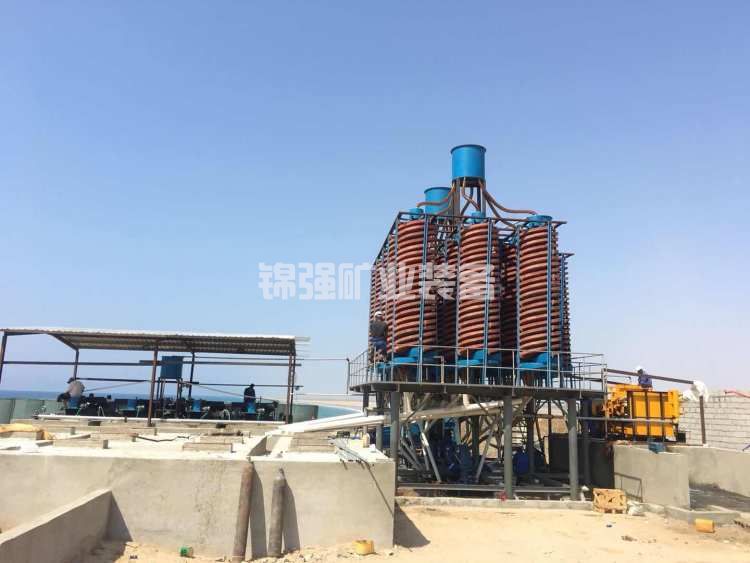 Service Phone:
+8619870423316
Service Phone:
+8619870423316
 Service Phone:+8619870423316
Service Phone:+8619870423316
current location: home > News and information
update date :2023-07-25 12:19:28Number of views: author:锦强设备
The coastal tin mine is one of the important tin resources in China, and its mining and utilization are of great significance for the production and supply of tin. However, the cassiterite content in coastal tin mines is relatively low, and a gravity separation process is needed to improve the grade and recovery rate of tin. This article will introduce the process flow of seaside tin ore gravity separation, helping readers understand how to effectively gravity select seaside tin ore and improve tin recovery rate.
1、 Overview of Seaside Tin Ore Gravity Separation Process
The gravity separation process of seaside tin mines mainly includes grinding, rough selection, intermediate selection, selection, and tailings treatment. Among them, grinding is the process of crushing the raw ore into appropriately sized particles for subsequent gravity separation operations. Rough selection is the removal of impurities and low-grade cassiterite from the raw ore, improving the grade and recovery rate of tin. Intermediate selection is the further separation and purification of rough selected cassiterite to obtain higher grade cassiterite. Selection is the final purification and separation of the selected cassiterite to obtain high-grade tin concentrate. Tailings treatment refers to the treatment and recovery of waste residue generated during the gravity separation process, reducing environmental pollution and resource waste.
2、 The gravity separation process flow of seaside tin ore
1. Grinding
The raw ore of the seaside tin mine is crushed to obtain particles of appropriate size and enters the grinding process. Grinding is mainly carried out using a ball mill, which places the ore and steel balls together into the ball mill. Through rotational friction and collision, the ore particles gradually become smaller and reach an appropriate grinding degree. The particle size of the ore after grinding is generally 0.074-0.1mm.
2. Rough selection
 roughing is the separation of ground ore to remove impurities and low-grade cassiterite. The coarse separation mainly uses the heavy medium separation method to put the ore particles into the heavy medium, and use the density difference of the heavy medium to divide the ore particles with different densities into different layers, so as to realize the separation of cassiterite. The grade of cassiterite after rough selection is generally 1.5-2.5%.
roughing is the separation of ground ore to remove impurities and low-grade cassiterite. The coarse separation mainly uses the heavy medium separation method to put the ore particles into the heavy medium, and use the density difference of the heavy medium to divide the ore particles with different densities into different layers, so as to realize the separation of cassiterite. The grade of cassiterite after rough selection is generally 1.5-2.5%.
3. Successful selection
Intermediate selection is the further separation and purification of rough selected cassiterite to obtain higher grade cassiterite. The flotation method is mainly used for intermediate selection, where the roughly selected cassiterite particles are placed in a flotation cell, and reagents and gases are added to combine the cassiterite particles with bubbles and float upwards, thereby achieving the separation and purification of cassiterite. The grade of selected cassiterite is generally 4-5%.
4. Selection
Selection is the final purification and separation of the selected cassiterite to obtain high-grade tin concentrate. Selection mainly adopts a combination of heavy medium separation and flotation methods, where the selected cassiterite particles are placed in the heavy medium for flotation, thereby achieving the final separation and purification of cassiterite. The grade of selected cassiterite is generally 20-30%.
5. Tailings treatment
Tailings treatment refers to the treatment and recovery of waste residue generated during the gravity separation process, reducing environmental pollution and resource waste. The tailings treatment mainly adopts the tailings leaching method, which places the tailings into the leaching tank, adds chemicals and water to dissolve the useful substances in it, thereby achieving the recovery and utilization of the tailings.
3、 Optimization of the Gravity Separation Process for Seashore Tin Mines
In order to further improve the recovery rate and economic benefits of coastal tin mines, it is necessary to optimize and improve the gravity separation process. Here are some common optimization methods:
1. Adopting new equipment and technologies, such as high-efficiency ball mills, new flotation machines, and automated control systems, to improve the efficiency and grade of gravity separation.
2. Optimize the formulation and usage of reagents to reduce waste and environmental pollution.
 3. Strengthen tailings treatment and Recycling to maximize the utilization of waste residue and reduce the impact on the environment.
3. Strengthen tailings treatment and Recycling to maximize the utilization of waste residue and reduce the impact on the environment.
4. Optimize the process flow and operation methods, reduce energy consumption and labor costs, and improve economic benefits.
In short, the gravity separation process of seaside tin ore is a complex process that requires the comprehensive use of various technologies and equipment to achieve efficient separation and purification of tin ore. Through continuous optimization and improvement, the recovery rate and economic benefits of coastal tin mines can be further improved, contributing to the production and supply of tin.
The gravity separation process flow of seaside tin ore what type of mining was used to find gol
what type of mining was used to find gol tin mining equipment
tin mining equipment Design of Spiral Chute Beneficiation
Design of Spiral Chute Beneficiation Jiangxi fiberglass spiral chute quotatio
Jiangxi fiberglass spiral chute quotatio Rough selection of sandy kaolin spiral c
Rough selection of sandy kaolin spiral c Formula for processing capacity of spira
Formula for processing capacity of spira Coal slime gold mine spiral chute
Coal slime gold mine spiral chute 38 degree complete spiral chute
38 degree complete spiral chute Installation process of spiral chute
Installation process of spiral chute Spiral chute energy-saving installation
Spiral chute energy-saving installation Particle size of iron ore spiral chute
Particle size of iron ore spiral chute Manufacturing method of anti crushing sp
Manufacturing method of anti crushing sp